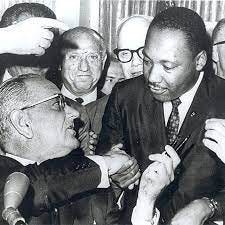The abolition of racism in the USA, 1954-1965
The epistemological sleight of hand of the notion of “systemic racism”
In my commentary on October 18, I wrote the following: “The teaching of white supremacy and the practice of racial discrimination were abolished in 1964 and 1965, and they were replaced by government mandated preferential treatment in employment and university admissions. If statistics were not manipulated by pseudo radical intellectuals, it would be seen that a great part of racial inequality today is caused by historical, class, and cultural factors, not racism or white supremacy.” Some in Twitter objected to this assertion. In today’s commentary, I further explain my understanding of the question.
In the United States of America prior to the Brown decision of the U.S. Supreme Court in 1954, the Civil Rights Act of 1964 and the Voting Rights Act of 1965, racial segregation was mandated by law in the U.S. South. Separate public accommodations were mandated by law, punished as a crime when violated. Separate educational facilities also were mandated by law, overruling re…


